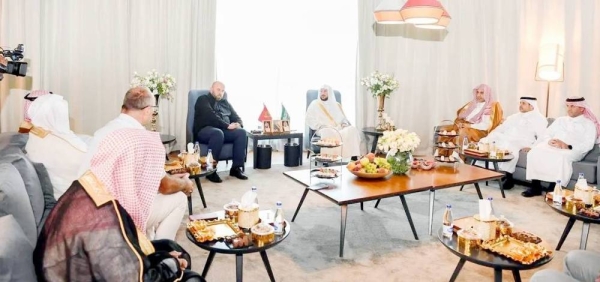
The structural reforms in Saudi Arabia have been ceaseless since January 2015. They have transformed the Kingdom into a huge workshop. Development and modernity have reached all aspects of the country.
The structural reform, which targets all state agencies and institutions, seeks to achieve the greatest goal of eliminating crippling bureaucracy. This was demonstrated in Friday’s royal decrees that called for establishing a culture ministry and a royal commission for Mecca and appointing lawmakers and minister aides. These developments cannot be separated from the reforms that have been taking place over the past three years.
It is not strange whenever such decrees are issued for some to believe that the restructuring operation has been complete.
The reality is that such restructuring actually never ends. It is an ongoing process that aims to reach a higher purpose that would see the Saudi government establish a more competent system. Such a system would eliminate bureaucracy, which is burdensome on any government in the world. Under such a system, state ministries and institutions would no longer operate as isolated islands.
The greatest example of the government bureaucracy is a story that is well known to Saudis. In 2011, the state approved the construction of 500,000 residential units throughout the Kingdom to tackle a housing crisis, dedicating an estimated SR250 billion (66.67 billion dollars) for the project. The Housing Ministry was tasked with its implementation, but what ended up happening instead?
Useless bureaucracy at the ministry thwarted the spending of these funds despite the state’s keenness at the time to find a permanent solution to the crisis.
In 2015, the government once again sought to resolve the problem after it had eliminated some aspects of the bureaucracy. This led to a rise in housing without even resorting to the SR250 billion. Over the past three years, housing rose from 47 to 50 percent and the government has vowed to raise this number to 60 percent by 2020 and 70 percent by 2030. The government plans to spend between SR600 billion and SR700 billion to during the next ten years to reach its goal.
Of course, had it not been for an effective government agency that was able to eliminate the flaws of bureaucracy, the Housing Ministry would not have been able to single-handedly achieve a breakthrough in the crisis.
The Saudi state is convinced that there is a dire need for a policy that would correct or reform the administrative structure of the government and its institutions and agencies. This effort is being led by Crown Prince Mohammed bin Salman, which would help the state speed up its measures to reach its goals. This can be accomplished by having state ministries and institutions adopt a set of administrative tools that would help achieve society’s economic and social goals.
No state can handle crisis-management without adopting structural reforms that meet the aspirations of the people.
I believe that structural reform is not about painting a house on the outside, but it is linked to arranging its internal affairs. This is the best way to reach the desired goal of all the reforms, which is building a different economic structure that would lead to and guarantee real, strong and sustainable growth.












